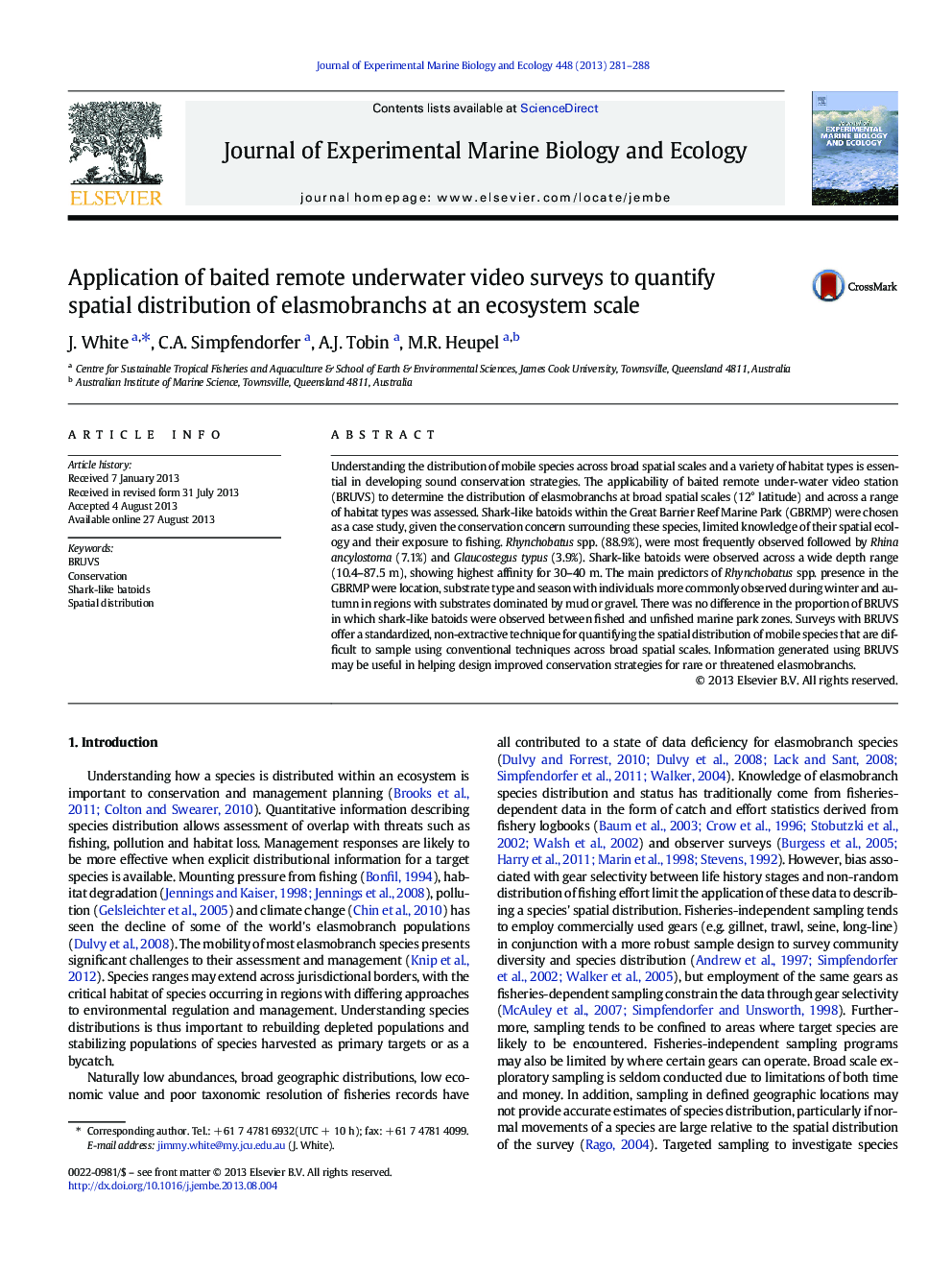| کد مقاله | کد نشریه | سال انتشار | مقاله انگلیسی | نسخه تمام متن |
|---|---|---|---|---|
| 6304409 | 1618427 | 2013 | 8 صفحه PDF | دانلود رایگان |

- Increased knowledge of habitat use for conservation concern species in the GBRMP
- BRUVS were demonstrated to be useful in defining elasmobranch distribution.
- Distribution was examined relative to location, substrate and season.
- Shark-like batoids were observed from 10 to 88Â m with highest affinity for 30-40Â m.
- No difference in occurrence of shark-like batoids in fished and unfished zones
Understanding the distribution of mobile species across broad spatial scales and a variety of habitat types is essential in developing sound conservation strategies. The applicability of baited remote under-water video station (BRUVS) to determine the distribution of elasmobranchs at broad spatial scales (12° latitude) and across a range of habitat types was assessed. Shark-like batoids within the Great Barrier Reef Marine Park (GBRMP) were chosen as a case study, given the conservation concern surrounding these species, limited knowledge of their spatial ecology and their exposure to fishing. Rhynchobatus spp. (88.9%), were most frequently observed followed by Rhina ancylostoma (7.1%) and Glaucostegus typus (3.9%). Shark-like batoids were observed across a wide depth range (10.4-87.5 m), showing highest affinity for 30-40 m. The main predictors of Rhynchobatus spp. presence in the GBRMP were location, substrate type and season with individuals more commonly observed during winter and autumn in regions with substrates dominated by mud or gravel. There was no difference in the proportion of BRUVS in which shark-like batoids were observed between fished and unfished marine park zones. Surveys with BRUVS offer a standardized, non-extractive technique for quantifying the spatial distribution of mobile species that are difficult to sample using conventional techniques across broad spatial scales. Information generated using BRUVS may be useful in helping design improved conservation strategies for rare or threatened elasmobranchs.
Journal: Journal of Experimental Marine Biology and Ecology - Volume 448, October 2013, Pages 281-288